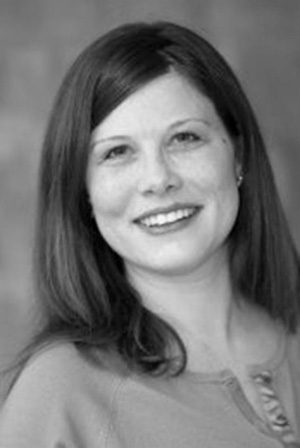Inspired to feel God’s presence in mikdashim — sanctuaries
Published February 23, 2011
In this week’s Torah portion Vayakhel, we read Moses’ account of all of the things that God has commanded concerning the building of the Mishkan (sanctuary), the donations that followed, and about the actual work of construction. Inspired by God’s statement that Moses should accept the terumah (donation) from everyone whose hearts so move him or her, we find that many come and donate. The people contribute so freely and so greatly that Moses has to proclaim that they should stop giving. With all the items collected and artisans in place, the work on the Mishkan begins.
How incredible is this act? The children of Israel, who had worshiped out in the desert, on mountaintops, and other individually established places, if at all, were now committed to contribute to and to offer their skills to build this structure. The masses came with free-will offerings and, after time, contributions were actually refused. Many of us, in Jewish organizations, yearn for these gifts of materials and skills of this magnitude. We must ask ourselves, “Why were our ancestors so compelled by this project?”
Our rabbis taught, “When God instructed Moses to build the Mishkan, Moses approached Bezalel to serve as chief architect. Bezalel asked, ‘What is the purpose of the Mishkan?’ Moses answered, ‘That God may allow [God’s] presence to dwell within it and thereby teach Torah to all of Israel'” (Exodus Rabbah 50:2).
Umberto Cassuto, a 20th century Italian scholar, understood that after the children of Israel had witnessed revelation “they were conscious of God’s nearness.” However, as the Israelites would journey away from Mt. Sinai, they would break the link. They needed “in their midst a tangible symbol of God’s presence among them.” As long as the Mishkan was in their midst, they could know that God was there with them.
Today, the Mishkan in the desert has evolved into many mikdashim (sanctuaries) across the world. The synagogue serves as a place of meeting, a place of study, and as a place of worship. We, too, have evolved and understand God’s presence in our lives as not being exclusive to our holy spaces. Sometimes, we even underestimate our need to feel God’s presence. However, for many of us, when we do purposefully seek encounters with God, it is in our synagogues. Although our modern sanctuaries are not designed according to the “blueprints” from God, they are designed with the desire for God’s presence to dwell among the people within these spaces.
When we walk into these spaces, we may not consider all of the planning, contributions, and detailing that went into the creation of the space. We do not think of the well-crafted plan by the architect and of the soothing palate selected by the designer. The hours of labor by the artist creating the Aron (Ark) and the Ner Tamid (Eternal Light) and the careful selection of panes for the stained glass are seldom pondered. Except for passing the plaque on the wall on the way in to the sanctuary, we rarely consider the individuals whose hearts inspired them to give the funds needed to build. What we tend to deliberate is not what went into the creation of the space, but rather how the space makes us feel.
The Mishkan in the desert, while portable, was designed to help the Israelites feel God’s presence. It is unlikely that those Israelites who contributed materials, but who did not have the expertise to lend their own hands to the construction of the Mishkan, considered all of the hours of labor and the tremendous skill that went into its construction. Yet, at the completion of the Mishkan, all the people observed the cloud that appeared by day and the fire within the cloud by night. This was a sign to the Israelites that God’s presence was among them, and they knew they had a part in creating and sustaining that space and presence.
Today, we do not have the ability to “see” God’s presence through the visual reference of a cloud or fire, but we do have the capability to create and sustain sanctuaries that inspire us to feel God’s presence. While we may just be looking for our own version of the “cloud”, we would not be able to come as close if it were not for all of those who contributed. God’s call, through Moses, for those gifts of free will, whether material or of skill, was not only a directive for that time, but a teaching for all the generations to come.
D’var Torah — Vayakhel
Rabbi Roxanne J.S. Shapiro serves as Rabbi/Educator at United Hebrew Congregation















